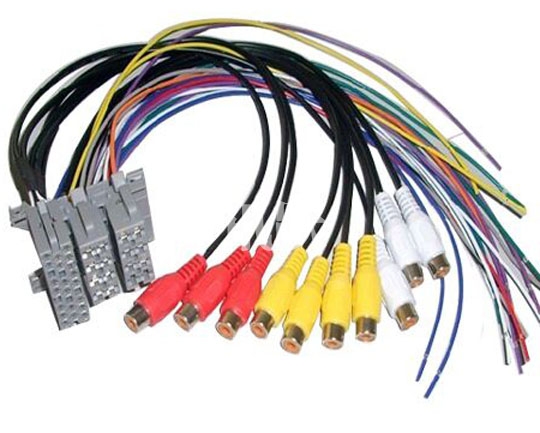Power Line & Motor Line
1. These two parts are the core parts of
the electric vehicle wiring harness. Before the power supply harness is
produced, the current allowable current value is 15a or less, including 15a,
and the cross-sectional area of the copper wire is
1.5 square millimeters, and the current value of the motor wire. Larger,
reaching 15a or more, below 22a, the cross-sectional area of the copper wire is 2.0 square millimeters.
2. Control the lock line of weak
electricity. Here, the current intensity of the wire harness is not large, and
is 1.0a to 3.0a, so that a cross-sectional area of 0.5 mm 2 is sufficient.
3. Light, horn, alarm harness. The
electronic horn is a warning sound component for safe driving, and the horn
used in the electric vehicle is almost always active. Similarly, after thorough
research with the customer, the data given is a current intensity of 1.0a-3.0a,
so the cross-sectional area is 0.5 square millimeters.
4. Data communication harness. Here, the
amount of current that the wire harness is allowed to pass is small, 0.5a or
less, and the wire diameter is 0.24 square millimeters. Obviously, such a match
is sufficient for signal transmission of various components of the electric
vehicle.

Generally speaking, if the wire diameter is
above the value specified above, the resistance of the wire harness is too
large, and the voltage on the wire harness will be large when the large current
such as the starter car passes, which can reach 2v or more, causing the
controller to enter the undervoltage prematurely. protection. Let us take 36v
as an example. When the cross-sectional area of the
wire harness is too small, its internal resistance is increased, which is
equivalent to connecting a resistor in series. When the battery voltage is 36v,
when there is more than 15a, if the internal resistance of the wire harness
exceeds 0.1 ohm according to Ohm's law, the upper pressure will reach 2v, the
voltage supplied to the controller is only 34v; when the battery voltage drops
to 33v At this time, the voltage supplied to the controller is only 31v, and
the controller enters undervoltage protection, but the battery is not fully
discharged.
Name: Carmen He
Mp/WhatsApp: +86-15626431755
Email:Carmen.He@kalelectronics.com
Teams:Carmen.he@kalelectronics.onmicrosoft.com